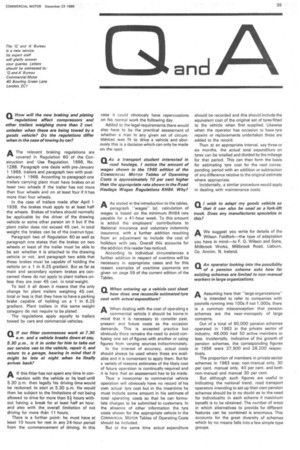12 When entering up a vehicle cost sheet how does one reconcile estimated tyre cost with actual expenditure?
Page 41

If you've noticed an error in this article please click here to report it so we can fix it.
' A When dealing with the cost of operating a commercial vehicle it should be borne in mind that it is necessary to consider past, present and future costs as the occasion demands. This is accepted practice but obviously there remains the need to avoid confusing one set of figures with another or using figures from varying sources indiscriminately.
In the interest of accuracy, actual costs should always be used where these are available and it is convenient to apply them. But for a variety of reasons estimates of the likely cost of future operation is continually required and it is here that an assessment has to be made.
Thus a newcomer to commercial vehicle operation will obviously have no record of his own actual tyre cost but in the meantime he must include some amount in his estimate of total operating costs so that he can formulate charges to be submitted to customers. In the absence of other information the tyre costs shown for the appropriate vehicle in the COMMERCIAL MOTOR Tables of Operating Costs should be included.
But at the same time actual expenditure should be recorded and this should include the equivalent cost of the original set of tyres fitted to the vehicle when first supplied. Likewise when the operator has occasion to have tyre repairs or replacements undertaken these are added to the record.
Then at an appropriate interval, say three or six months, the actual total expenditure on tyres can be totalled and divided by the mileage for that period. This can then form the basis for estimating tyre cost for the next corresponding period with an addition or subtraction of any difference relative to the original estimate where appropriate.
Incidentally, a similar procedure would apply in dealing with maintenance costs.












































































